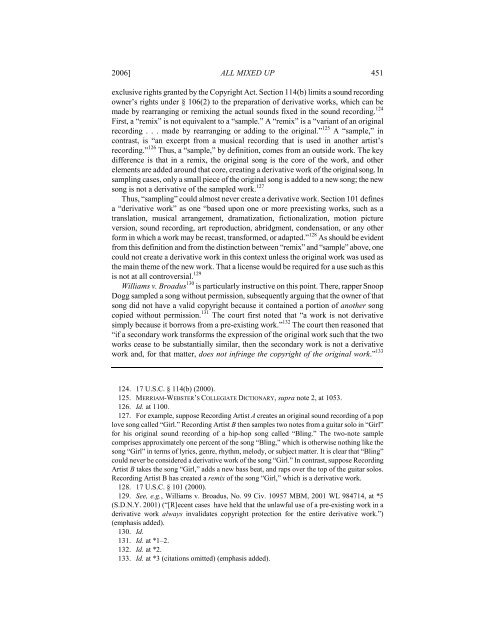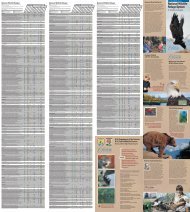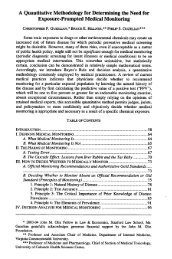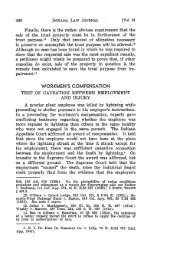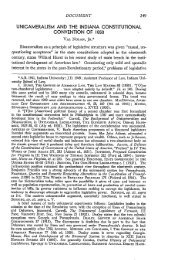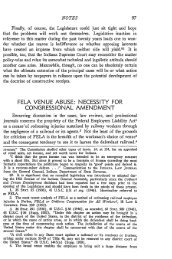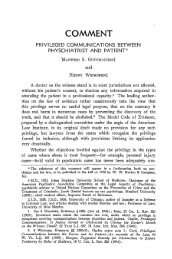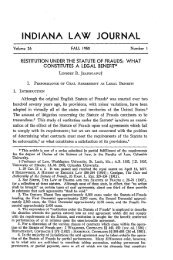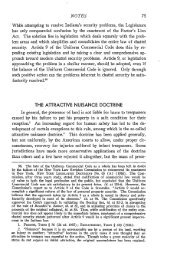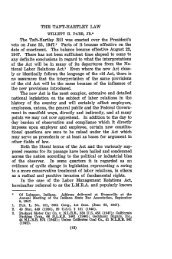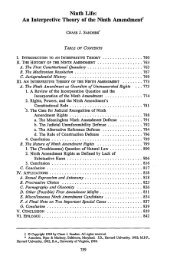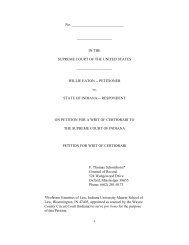Bridgeport Music v. Dimension Films - Indiana University School of ...
Bridgeport Music v. Dimension Films - Indiana University School of ...
Bridgeport Music v. Dimension Films - Indiana University School of ...
You also want an ePaper? Increase the reach of your titles
YUMPU automatically turns print PDFs into web optimized ePapers that Google loves.
2006] ALL MIXED UP 451<br />
exclusive rights granted by the Copyright Act. Section 114(b) limits a sound recording<br />
owner’s rights under § 106(2) to the preparation <strong>of</strong> derivative works, which can be<br />
made by rearranging or remixing the actual sounds fixed in the sound recording. 124<br />
First, a “remix” is not equivalent to a “sample.” A “remix” is a “variant <strong>of</strong> an original<br />
recording . . . made by rearranging or adding to the original.” 125 A “sample,” in<br />
contrast, is “an excerpt from a musical recording that is used in another artist’s<br />
recording.” 126 Thus, a “sample,” by definition, comes from an outside work. The key<br />
difference is that in a remix, the original song is the core <strong>of</strong> the work, and other<br />
elements are added around that core, creating a derivative work <strong>of</strong> the original song. In<br />
sampling cases, only a small piece <strong>of</strong> the original song is added to a new song; the new<br />
song is not a derivative <strong>of</strong> the sampled work. 127<br />
Thus, “sampling” could almost never create a derivative work. Section 101 defines<br />
a “derivative work” as one “based upon one or more preexisting works, such as a<br />
translation, musical arrangement, dramatization, fictionalization, motion picture<br />
version, sound recording, art reproduction, abridgment, condensation, or any other<br />
form in which a work may be recast, transformed, or adapted.” 128 As should be evident<br />
from this definition and from the distinction between “remix” and “sample” above, one<br />
could not create a derivative work in this context unless the original work was used as<br />
the main theme <strong>of</strong> the new work. That a license would be required for a use such as this<br />
is not at all controversial. 129<br />
Williams v. Broadus 130 is particularly instructive on this point. There, rapper Snoop<br />
Dogg sampled a song without permission, subsequently arguing that the owner <strong>of</strong> that<br />
song did not have a valid copyright because it contained a portion <strong>of</strong> another song<br />
copied without permission. 131 The court first noted that “a work is not derivative<br />
simply because it borrows from a pre-existing work.” 132 The court then reasoned that<br />
“if a secondary work transforms the expression <strong>of</strong> the original work such that the two<br />
works cease to be substantially similar, then the secondary work is not a derivative<br />
work and, for that matter, does not infringe the copyright <strong>of</strong> the original work.” 133<br />
124. 17 U.S.C. § 114(b) (2000).<br />
125. MERRIAM-WEBSTER’S COLLEGIATE DICTIONARY, supra note 2, at 1053.<br />
126. Id. at 1100.<br />
127. For example, suppose Recording Artist A creates an original sound recording <strong>of</strong> a pop<br />
love song called “Girl.” Recording Artist B then samples two notes from a guitar solo in “Girl”<br />
for his original sound recording <strong>of</strong> a hip-hop song called “Bling.” The two-note sample<br />
comprises approximately one percent <strong>of</strong> the song “Bling,” which is otherwise nothing like the<br />
song “Girl” in terms <strong>of</strong> lyrics, genre, rhythm, melody, or subject matter. It is clear that “Bling”<br />
could never be considered a derivative work <strong>of</strong> the song “Girl.” In contrast, suppose Recording<br />
Artist B takes the song “Girl,” adds a new bass beat, and raps over the top <strong>of</strong> the guitar solos.<br />
Recording Artist B has created a remix <strong>of</strong> the song “Girl,” which is a derivative work.<br />
128. 17 U.S.C. § 101 (2000).<br />
129. See, e.g., Williams v. Broadus, No. 99 Civ. 10957 MBM, 2001 WL 984714, at *5<br />
(S.D.N.Y. 2001) (“[R]ecent cases have held that the unlawful use <strong>of</strong> a pre-existing work in a<br />
derivative work always invalidates copyright protection for the entire derivative work.”)<br />
(emphasis added).<br />
130. Id.<br />
131. Id. at *1–2.<br />
132. Id. at *2.<br />
133. Id. at *3 (citations omitted) (emphasis added).


